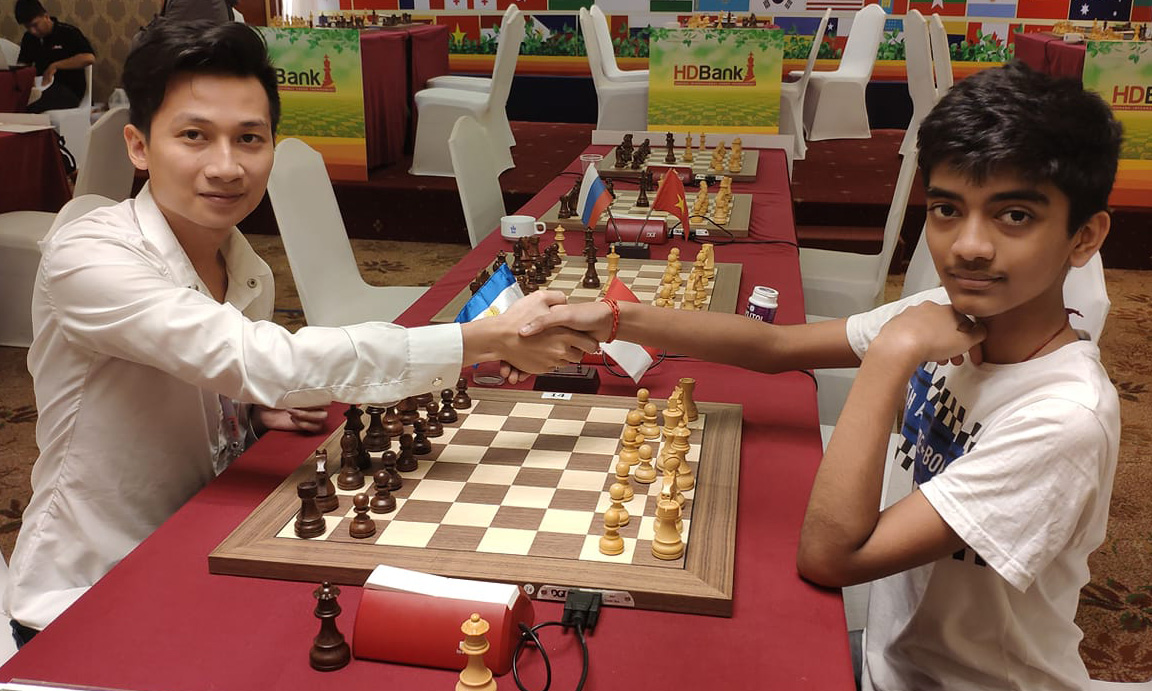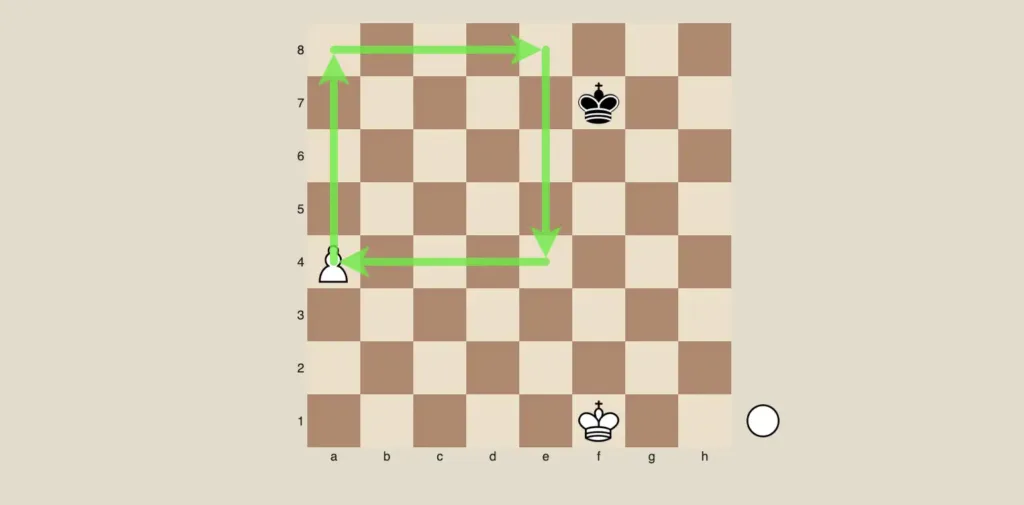King and pawn endgames often feel like walking on a tightrope. One small misstep, a slow move, a missed tempo, and the game slips away. But there’s one classic shortcut that can help players instantly evaluate many of these tricky positions: the square rule.
This rule doesn’t require deep calculation or advanced theory, just a bit of imagination and pattern recognition. Let’s break it down.
What Is the Square Rule?
The square rule is a mental tool that helps you quickly determine whether a passed pawn can promote without the assistance of its king. It’s especially useful in endgames where one side has a lone pawn and the opponent is rushing their king over to stop it.
The basic idea is this:
- If the enemy king can enter the “square” of the pawn on its next move, it can catch the pawn.
- If not, the pawn promotes.
How to Draw the Square
Let’s say you have a white pawn on a4, trying to reach a8.
To apply the square rule:
- Start from the pawn’s square (a4).
- Imagine a square that extends:
- Forward to the promotion rank (a8),
- Sideways an equal number of squares (so from a4 to e4),
- Up to the same file (e8), and
- Back to the starting point (a4), forming a square: a4-a8-e8-e4.
That’s the square. Now ask yourself:
Is the enemy king inside or able to step into that square immediately?
If yes, it can stop the pawn. If no, the pawn outruns the king.
An Example in Action
Let’s revisit a practical scenario:
White to move. White has a pawn on a4. Black’s king is on g7.
- White plays 1.a4!
Now draw the square: a4-a8-e8-e4.
- Black plays 1…Kf7, racing toward the pawn.
But the black king isn’t inside the square and cannot enter it on the next move.
- White continues: 2.a5, 3.a6, 4.a7, 5.a8=Q.
Promotion is inevitable. The square rule told us that from move one.
What If the King Is Inside the Square?
Now imagine a different setup. Same pawn on a4, but this time the black king is closer, say, on e6.
Here, the king is already inside the square (a4–a8–e8–e4). That means it can catch the pawn.
In this case, White cannot promote the pawn without assistance. It’s now a team job, the white king must step in, support the pawn, and ideally block the opposing king’s path.
This leads us to the second part of the rule.
Blocking the Enemy King: A Crucial Tactic
If the king is already in the square, don’t give up hope. The stronger side can still win if:
- Their king helps escort the pawn.
- They manage to block the path of the enemy king.
Take this game:
A Word on Rook Pawns
One special case to note: rook pawns (a-pawns and h-pawns) can behave differently. Their promotion path hugs the edge of the board, limiting how many squares the opposing king needs to cover. That means:
- The square rule still applies, but
- Even if the king is outside the square, a draw is sometimes possible if it reaches the promotion corner in time.
So keep an extra eye on those edge cases, literally.
Final Thoughts
The square rule is a perfect example of how elegance and simplicity can live in harmony with depth in chess. With just a little visualization, players of all levels can confidently judge pawn races, often without calculating every move.
So the next time you find yourself in a king-and-pawn endgame, don’t panic.
Just draw the square. It might win you the game.

I’m Xuan Binh, the founder of Attacking Chess, and the Deputy Head of Communications at the Vietnam Chess Federation (VCF). My chess.com and lichess rating is above 2300. Send me a challenge or message via Lichess. Follow me on Twitter (X) or Facebook.


1 thought on “Master the Square Rule: The Simplest Endgame Trick in Chess”
Comments are closed.